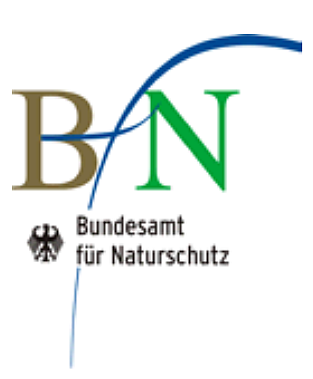Taxon Information

Acrorchis spp.
Höhere Pflanzen
Protection
| Regularizations | Footnotes | Name in source |
|---|---|---|
| WA Washingtoner Artenschutzübereinkommen II | #4 All parts and derivatives, except: a) seeds (including seepods of Orchidaceae), spores and pollen (including pollinia). The exemption does not apply to seeds from Cactaceae spp. exported from Mexico, and to seeds from Beccariophoenix madagascariensis and Neodypsis decaryi exportet from Madagascar; b) seedling or tissue cultures obtained in vitro, in solid or liquid media, transported in sterile containers; c) cut flowers of artificially propagated plants; d) fruits and parts and derivatives thereof, of naturalized or artificially propagated plants of the genus Vanilla (Orchidaceae) and of the family Cactaceae; e) stems, flowers, and parts and derivatives therof, of naturalized or artificially propagated plants of the genera Opuntia subgenus Opuntia and Selenicereus (Cactaceae); and f) finished products of Euphorbia antisyphilitica packaged and ready for retail trade. | Orchidaceae spp. |
| WA Washingtoner Artenschutzübereinkommen II | 7+ Artificially propagated hybrids of the following genera are not subject to the provisions of the Convention, if conditions, as indicated under a) and b), are met : Cymbidium, Dendrobium, Phalaenopsis and Vanda: a) Specimens are readily recognizable as artificially propagated and do not show any signs of having been collected in the wild such as mechanical damage or strong deyhydration resulting from collection, irreular growth and heterogeneous size leg and shape within a taxon and shipment, algae or other epiphyllous organisms adhering to leaves, or damage by insects or other pests; and b) i) when shipped in non-flowering state, the specimens must be traded in shipments consisting of individual containers (such as cartons, boxes, crates or individual shelves of CC-containers) each containing 20 or more plants of the same hybrid; the plants within each container must be exhibit a high degree of uniformity and healthiness; and the shipment must be accompanied by documentation, such as an invoice, which clearly states the number of plants of each hybrid; or ii) when shipped in flowering state, with at least one fully open flower per specimen, no minimum number of specimens per shipment is required but specimens must be professionally processed for commercial retail sale, e.g. labelled with printed labels or packaged with printed packages indicating the name of the hybrid and the country of final processing. This should be clearly visible and allow easy verification. Plants not clearly qualifying for the exemption must be accompanied by appropriate CITES documents. | Orchidaceae spp. |
| EG EG-Verordnung 750/2013 B | (13) Diese Verordnung gilt nicht für künstlich vermehrte Hybriden der folgenden Gattungen, wenn sie nachstehend unter den Buchstaben a und b angegebenen Bedingungen erfüllt werden; Cymbidium, Dendrobium, Phalaenopsis und Vanda: a) Die Exemplare sind als künstlich vermehr leicht erkennbar und zeigen keinerlei Anzeichen, die auf Ursprung in der freien Natur schließen lassen, wie etwa mechanische Beschädigungen oder starke Dehydrierung durch die Entnahme, ungleichmäßigen Wuchs oder unterschiedliche Größe und Form innerhalb des Taxons und einer Warensendung, Blätter mit Algenbewuchs oder anderen e-piphyllen Organismen oder Schädigungen durch Insekten oder andere Schäd-linge; und b) i) wenn sie im nichtblühenden Zustand versendet werden, müssen die Ex-emplare in Warensendungen gehandelt werden, die aus individuellen Verpackungen bestehen (wie etwa Kartons, Schachteln, Kisten oder individuellen Einlegböden von CC-Containern), jede mit 20 oder mehr Pflanzen desselben Hybrids; die Pflanzen innerhalb einer Verpackungseinheit müs-sen ein hohes Maß einheitlicher Erscheinungsform und Gesundheit zeigen; und die Warensendung muss von Dokumenten wie einer Warenrechnung begleitet werden, aus denen die Zahl der Pflanzen jedes Hybrids deutlich hervorgeht; oder ii) wenn sie im blühenden Zustand versendet werden, also mit mindestens einer voll aufgeblühten Blüte pro Exemplar, ist keine Mindestzahl von Exemplaren je Warensendung erforderlich, aber die Exemplare müssen pro-fessionell für den kommerziellen Einzelhandel vorbereitet sein, z.B. mit ge-druckten Etiketten gekennzeichnet oder in Verpackungen mit Aufdruck verpackt sein, welche den Namen des Hybrids und das Land, in dem die Pflanze zuletzt bearbeitet wurde, aufweisen. Dies hat leicht sichtbar zu sein und eine einfache Überprüfung zu ermöglichen. Pflanzen, die die Be-dingungen für die Ausnahme nicht klar erfüllen, müssen von entsprechen-den CITES-Dokumenten begleitet sein. | Orchidaceae spp. |
| EG EG-Verordnung 750/2013 B | #4 Bezeichnet alle Teile und Erzeugnisse, ausgenommen: a) Samen (einschließlich Samenkapseln von Orchidaceae), Sporen und Pollen (einschließlich Pollinien). Die Ausnahme gilt nicht für Samen von Cactaceae spp., ausgeführt nach Mexiko, und Samen von Beccariophoenix madagascariensis und Neodypsis decaryi, ausgeführt aus Madagaskar, b) In-vitro Sämlings- oder Gewebekulturen in festem oder flüssigem Medium, die in sterilen Behältern befördert werden, c) Schnittblumen von künstlich vermehrte Pflanzen, d) Früchte sowie Teile und Erzeugnisse aus solchen, welche von außerhalb ihres natürlichen Verbreitungsgebiets eingebürgerten oder künstlich vermehrten Pflanzen der Gattung Vanilla (Orchidaceae) und der Familie Cactaceae stammen, e) Stängel, Blüten sowie Teile und Erzeugnisse aus solchen, welche von außerhalb ihres natürlichen Verbreitungsgebiets eingebürgerten oder künstlich vermehrten Pflanzen der Gattungen Opuntia, Untergattung Opuntia, und Selenicereus (Cacataceae) stammen, und f) fertige Produkte von Euphorbia antisyphilitica, verpackt und für den Einzelhandel bereit. | Orchidaceae spp. |
| BG streng bzw. besonders geschützt nach BNatSchG b | Acrorchis spp. |
Protection details:
| Protection | Date | Annotation |
|---|---|---|
| Erstlistung seit | 20.06.76 | |
| Besonders geschützt nach BNatSchG seit | 31.08.80 | |
| More information on the history of regularizations you can get here | ||
Additional remark:
Elaboration of protection history:
"Earliest protection" shows the first date after that the species is beeing protected by national law.
"Strongest protection state" shows the first date when the species has got the strongest protection.
"Protected by BNatSchG" shows since when a species is protected by national law.
"Earliest protection" shows the first date after that the species is beeing protected by national law.
"Strongest protection state" shows the first date when the species has got the strongest protection.
"Protected by BNatSchG" shows since when a species is protected by national law.
The internet service WISIA-online show information on the protection of species in Germnay by national law without obligation. For legal questions the official regulations of the German legislator are binding exclusively.
Your are using WISIA with the English user interface. For the convenience of our international users we are offering the user interface and some content in English. Unfortunately we are not able to show you the content bilingual, too. Therefore you will find news, footnotes, vernacular names and other, database-driven content only in German. We would like to apologize for the inconvinience which is due to limited resources.



